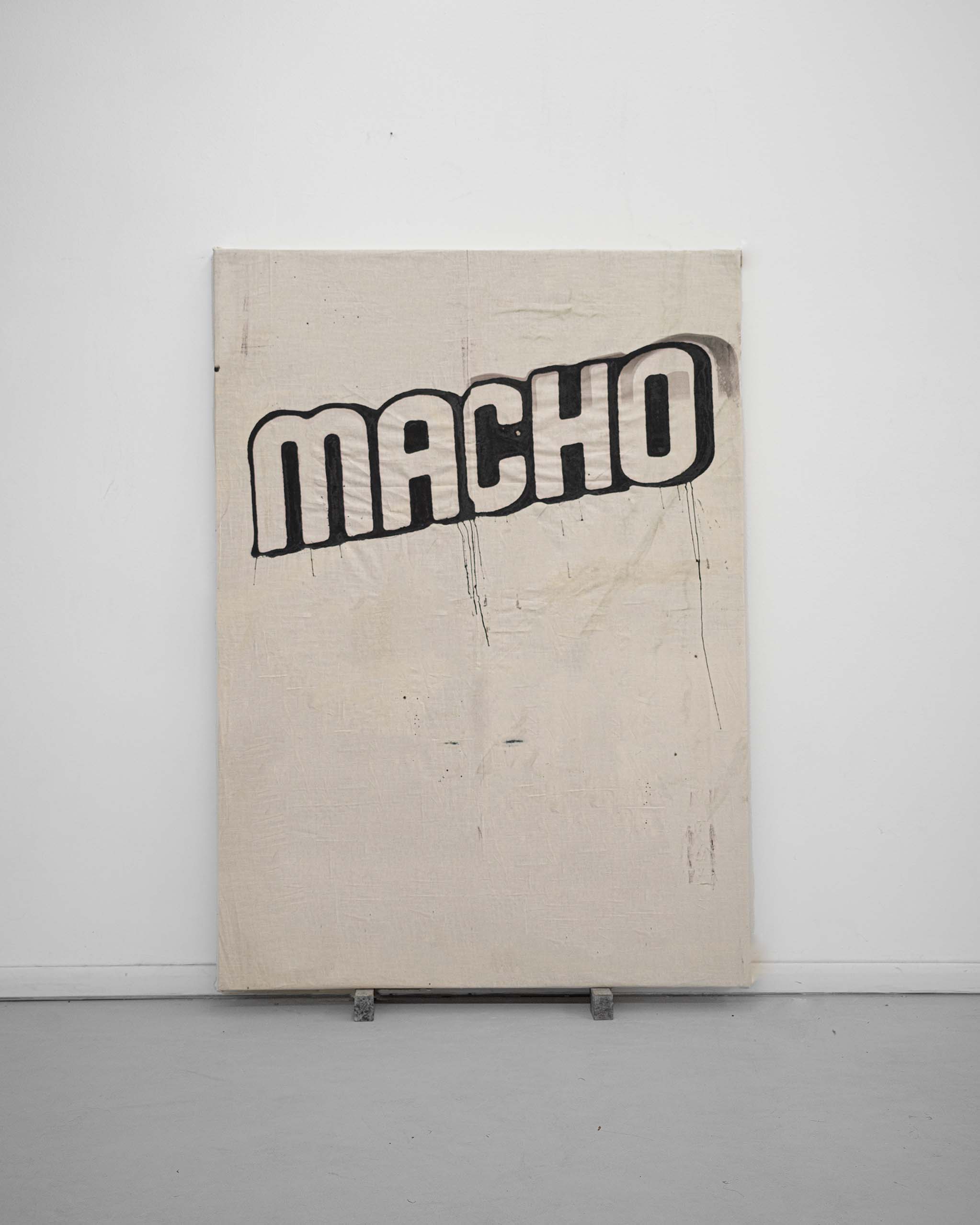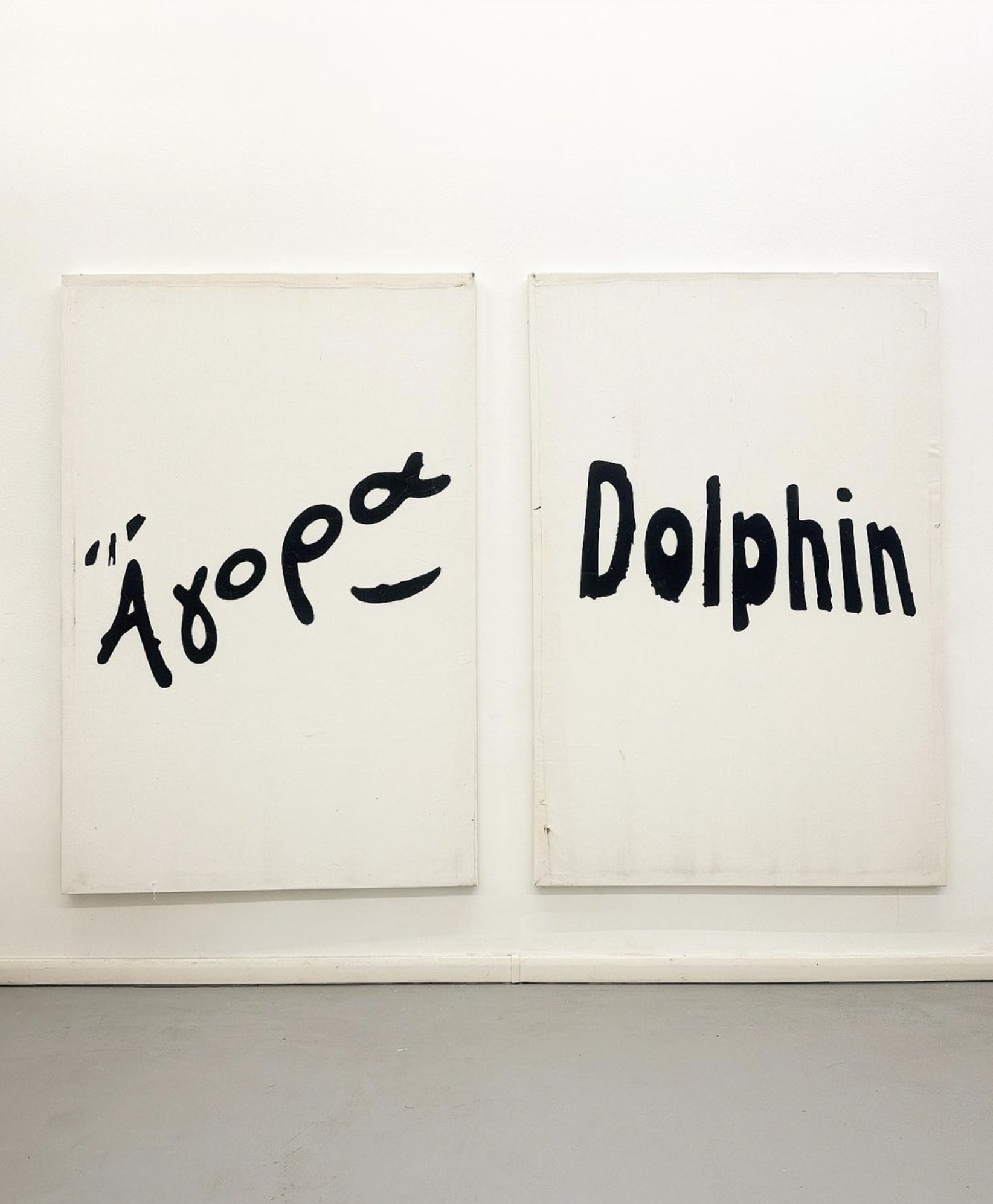2022 – 2032
DIZIONARIO VOL.2
Dizionario Vol.2 is the second of a series of encyclopedic collections of words photographed by Luca Massaro, presented every 10 years in book form in alphabetic order.
Each decade is supposed to produce a book with the same graphic design (Vol.1: 2012 - 2022 Vol.2: 2022 - 2032 etc..). The archives of around 2000 pictures are used as raw material for applications in site-specific installations.
SELECTED EXHIBITIONS
Winner Gibellina x Triennale Milano: Public Installation in Gibellina in collaboration with architect Anna Merci in July 2023.
SEE DIZIONARIO VOL.1 BOOKS & INSTALLATION︎︎︎
Duetto @ Viasaterna on MOUSSE Magazine
“Language as a paradoxical and conflicting force shaping the hybridized present is at the
core of Milan-based Luca Massaro’s eclectic work. Through photographs, sculptures,
paintings, and artist books he digs the urban and online transient panorama laying bare
the combined action of contemporary culture, visual art, graphic communication, and
advertising in negotiating the cultural, social and political value of the images that embody
our collective worldview.
Although the possibility to experiment with a vast spectrum of
media and supports is functional for Massaro to address the tension between meaning
and materiality, it’s the creative process itself that outweighs any formal solution. From his
archival collection of almost 1000 photographs of signs which he shot and rigorously
recorded over the last ten years, the actual writings are extrapolated from the pictures
using default graphic softwares (text-to-path) and converted into a textual outline,
creating an abstract image out of language. The dissociation is both digital and semantic
as the text gets printed, painted, or forged into a sculptural piece and reproduces itself in
a new image.
Among the selected works on display in Duetto, two sets of paintings on metal plates
emphasize the grey area where message and repetition overlap as they explore the
interface between how information appears and how viewers interact with it. Hand-painted
in white against a black background, mimicking the negative-positive photographic
process, words and symbols stand out all the more starkly, positioned as they are in the
middle of pictorial space.
The size of the four larger paintings is a 1:1 scale based on the
artist’s height, whereas each of the twenty smaller plates is a 1:1 scale based on the artist’s
head, this correspondence introducing a Modulor (scale of proportions based on human
measurements) and an autobiographic characterization to the serial display. Two soft
blown up sculptures of a question mark stretched on the floor and an exclamation mark
hanging off the wall like a punchball, also extracted from the photographic matrices of
Dizionario Vol.1, stand still in a state of charged latent energy alluding to the intrinsic
oscillation of Massaro’s work amid masculine and feminine, hard and soft, mind and
matter, frivolous and functional, high and low, images and words.
With captivating lightboxes La Notte and &, fabricated out of photo-textual outlines, Massaro relays his
longstanding fascination for the ubiquitous proliferation of backlit devices and the charming
effectiveness of their communication. These corpi tipografici (typographic bodies of work)
eschew definitions (λόγος) as they let themselves be said, read and seen only through
their phonetical effect (φωνή).”
Poetry shines in the fragment – Franco Bifo Berardi
“
In Bologna, where I live, a movement for the emancipation of poetry
has been established for some time.
I have no idea who they are, I don’t
know them. But I imagine them, of
course, one by one. What are these lunatic emancipators
of poetry doing? They stick A4 sheets
on the city walls, and on each sheet
there is a little poem. Sometimes very beautiful, sometimes
less, but who am I to judge poetry?
In some districts of the city, these sheets remain exposed to rain and sun,
intact however, and full of words. [..] I know I know, I shouldn’t talk about
Bologna, but Reggio Emilia, but it’s
always about billboards, and always
about poetry. Torn, of course, torn
billboards I meant.
The order loving citizens may not
know it, but poetry doesn’t give a
damn about rippers. Yes, the poem shines in the
fragment, it shines as a promise
of unimaginable loves and aching
hearts. [..] Yet there are poets. They tear, at times, and at
other times they are torn.
I love torn poets. For example, in Vicolo Posterla there
is a piece of paper which reads: “The sun when it goes down / Rem / And” [..] But there are these shining
fragments of torn advertisements
that are no longer advertisements but
finally painting, finally poetry.
Finally poetry.
Finally.”
(Full text pictured above as published by Art Paper Editions) Text written on the occasion of Spazio Libero, public collective installation curated by Ilaria Campioli & Daniele De Luigi. Courtesy of the Author and Comune di Reggio Emilia.
FOAM Magazine #60 – Federica Chiocchetti
“Italian artist Luca Massaro has been building a solid body of work on ‘the invisible space that separates an image from its caption, photographs from words, in their different forms of production, translation and transmission’[..], through an eclectic array of photographs, words, sculptures, installations and artists books. [..]
Ten years ago, Massaro begun his affair with words in the public space and landscape, which initially emerged in a sort of photographic encyclopedia, his book Foto Grafia, 2015.. With his new multimedia piece Dizionario Vol.1 he goes one step further. [..]
As the entry of a dictionary has lost its linguistic autonomy and has become ancillary to the imagery picture of the term it defines, like a caption, Massaro exacerbates this concept by building a multi-volume dictionary in which words and entries are replaced by images of words indexed in alphabetic order.
For Volume 1, these images-words have been shot in the public space and mostly, yet not exclusively, in the urban landscape, since 2012 in Europe, Japan, Mexico and North America.
Dizionario is a long-term project: every ten years the artist will publish a volume that assembles around 1000 new images accumulated in the previous decade from his personal archive.
This verbo-visual archive, which creates abstract images out of language, is used as a matrix for the fabrication of new works with various materials [..], exhibited out of context, almost generating a second, more sculptural dictionary. In this way Massaro’s project becomes a semiotic organism that questions and somehow resists the cultural and socio-political values of the images and texts that haunt our psyche and permeate a shared worldview”
Cities are places full of writing. On the walls, of course. And not only. In Sand Collection Italo Calvino (reasoning on what was perhaps the greatest "scripturologist" of the last century, Armando Petrucci) described Rome - the city where he had moved in 1980 - as the palimpsest of writings par excellence: the writings of the Empire, engraved on the stone in eternal memory of those who had Emperor, the colorful stratifications of the graffiti artists overlapped - in his time as in ours. But (unlike Petrucci) Calvino didn't like either these or those too much: both, as well as advertising, are forms of writing that require them to be read (or at least perceived) by those who would instead want to turn their attention to the facts. His own, and read (if he really wants to read) only what he feels like.
In Rome, Calvino came from Paris: the city where in May, twelve years earlier, the writing on the wall had become a semiotic guerrilla, an intellectual revolt, an ongoing body-poetry. He, perched aside in the Square de Chatillon, took notes in silence. Those were words perhaps not to be read, but to be lived (in any case, it will be known later, certain brilliant jokes read on those walls at the time were written not by the anonymous community of revolutionaries, but by a single author - he who of anonymity and of the neutral, et pour cause , he had become a theoretical apostle and, as in this case, a performer –, Maurice Blanchot). Certainly in that other city, from Lautréamont ("poetry must be made by all, not by one") to Breton passing through Zone 's Apollinaire, the walls could now boast a decent curriculum . But even in our area, a poet who in turn had rinsed his clothes in the Seine, Aldo Palazzeschi, had written the definitive poem on the city as a labyrinth of written signs, The Walk (in the Incendiario, Edizioni futuriste di Poesia, 1913 ) , reporting simply what he had read one fine day in Florence on Via Garibaldi: a poem-cinema ("a prose kinema", Ezra Pound would soon proclaim) which was also a dictionary of images.
The book published by Luca Massaro, whose title is Dizionario Vol. 1, as Federica Chiocchetti explains in the text that accompanies it, is the outcome of a ten-year work and, in votis, only the beginning of what, in the manner of Roman Opalka, it could occupy him his whole life. He calls it Dictionary because it works, for these images, a bit like a Rosetta stone; but it is also an Atlas of the places that (like it or not: forgive us Calvino) we read while we live them. And then, too, the diary of all of us. Perhaps Lautréamont was right.


















